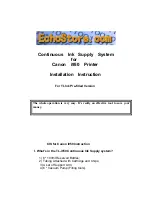
106
MEDEA Programming Manual
•
LOGICAL ID:
This displays the logical address assigned to the input.
•
PHYS.ADDRESS:
This shows the physical address of the input.
•
TYPE:
This indicates the input use method.
•
DESCRIPTION:
This is the alphanumeric label used to identify the device more easily.
•
STATE:
This indicates the input status according to the following table:
= Open input
= Open input memory
= Alarm memory
= Tamper input (sabotage)
= Input excluded/isolated
= Inhibited (temporarily excluded)
= Close (input in stand-by)
= Jamming
The following buttons appear under underneath:
•
CSV
: This can be used to export the inputs list to a
“.csv” file, which can be opened with a spreadsheet.
•
, which exports the list of inputs to a PDF file.
•
R
, reset the open input memory.
The
<
and
>
buttons in the bottom right are used to navigate between table pages.
6.1.8
Output
This enables and disables individual outputs.
It is accessed through the
DIAGNOSTIC→ INPUT/OUTPUT
menu.
Figure 117 - Manual activation of the outputs
The following information is included in the table concerning the outputs.
•
LOGIC ID:
This shows the logical address assigned to the output.
•
PHYS.ADDRESS:
This shows the physical address of the output.
•
TYPE:
This indicates the output use method.
•
INITIAL STATE:
This indicates the status of the output when it is at stand-by (not activated).
•
DESCRIPTION:
This is the alphanumeric label used to identify the output more easily.
•
STATE:
This indicates the real-time status of the output.
•
ACTIVATE:
The status of the output can be switched by acting on the switch relative to the
respective output.
















































